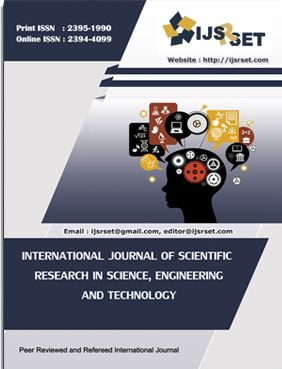Millets as a Sustainable Solution for Nutritional Security: Study on Their Role in Food Systems and Human Health
Keywords:
Millets, Nutritional Security, Health Impact, Food Systems, Consumption Study, Pre/Post Intervention, Control GroupAbstract
This paper explores the use of millets in enhancing nutritional security and ensuring that people advance healthy lifestyles. As the world struggles with food insecurity challenges especially in the low and middle income countries, millets can play a wonderful role by providing a sensible sustainable food alternative to the popular staple food such as rice and wheat. The study was a pre and post intervention with a control group design to measure the health benefits of eating millet. The research was targeted to determine its effect on main health indicators related to blood glucose, cholesterol, body weight, and concentration of micronutrients. The samples were randomly selected and participants recruited were 150 in number; 75 in the experimental group (individuals that consume millet) and 75 in the control group (who do not consume millet). A group of the experiment took 50 grams of millet per day and received 3-6 months. The major results indicate that nutrient intake of millet resulted in markedly decreased blood glucose (-14.1 mg/dL), cholesterol (-15.3 mg/dL), and body weight (-3.7 kg) as compared to the control group. Also, the levels of micronutrients were effectively increased (iron, calcium, zinc). The belief in the health and sustainability advantages of millets was reported by the experimental group, which is consistent with their ability to address the issues of malnutrition and the necessity to have sustainable and climate-resilient agriculture. This paper highlights the promise of millets being a sustainable food that has the potential to meet the global nutrition challenge. It also reveals the need to have policy interventions and consumer education to introduce millets in mainstream diets and food systems towards sustainable nutritional security and health.
📊 Article Downloads
References
Anitha, S., Kane-Potaka, J., Tsusaka, T. W., Botha, R., Rajendran, A., & Givens, D. I. (2020). A systematic review and meta-analysis of the potential of millets for managing and preventing diabetes mellitus. Frontiers in Nutrition, 7, 601604. https://doi.org/10.3389/fnut.2020.601604
Muthamilarasan, M., & Prasad, M. (2021). Small millets for enduring food security amid pandemics. Trends in Plant Science, 26(1), 33–40. https://doi.org/10.1016/j.tplants.2020.10.012
FAO. (2023). The state of food security and nutrition in the world 2023. Food and Agriculture Organization of the United Nations. https://doi.org/10.4060/cc3017en
Saleh, A. S. M., Zhang, Q., Chen, J., & Shen, Q. (2013). Millet grains: Nutritional quality, processing, and potential health benefits. Comprehensive Reviews in Food Science and Food Safety, 12(3), 281–295. https://doi.org/10.1111/1541-4337.12012
Devi, P. B., Vijayabharathi, R., Sathyabama, S., Malleshi, N. G., & Priyadarisini, V. B. (2014). Health benefits of finger millet (Eleusine coracana L.) polyphenols and dietary fiber: A review. Journal of Food Science and Technology, 51(6), 1021–1040. https://doi.org/10.1007/s13197-011-0584-9
Pingali, P., & Sunder, N. (2017). Transitioning toward nutrition-sensitive food systems in developing countries. Annual Review of Resource Economics, 9(1), 439–459. https://doi.org/10.1146/annurev-resource-100516-053552
Taylor, J. R. N. (2004). Millets: Their unique nutritional and health-promoting attributes. Cereal Foods World, 49(3), 122–126.
Goron, T. L., & Raizada, M. N. (2015). Genetic diversity and genomic resources available for the small millet crops to accelerate a New Green Revolution. Frontiers in Plant Science, 6, 157. https://doi.org/10.3389/fpls.2015.00157
Mishra, A., & Jha, S. K. (2021). Nutritional profile and potential health benefits of millets: A review. Plant Archives, 21(1), 184–190.
Bhuvaneswari, G., & Kavitha, R. (2020). Millets and their role in promoting health and nutrition: A review. The Pharma Innovation Journal, 9(7), 23–28.
ICRISAT. (2023). Smart Food Initiative Annual Report. International Crops Research Institute for the Semi-Arid Tropics. https://www.icrisat.org
Sharma, N., & Singh, D. (2022). Policy framework for mainstreaming millets in the Indian food system. Current Science, 122(5), 537–544.
Ali, R., & Ahmad, T. (2023). Agro-ecological advantages of millets: A climate-resilient crop. Environmental Sustainability, 6, 81–89. https://doi.org/10.1007/s42398-023-00245-2
Kumari, R., & Sharma, M. (2021). Consumer acceptability and nutritional value of millet-based products. International Journal of Current Microbiology and Applied Sciences, 10(1), 2467–2473.
Subramanian, S., & Mohanraj, R. (2020). Role of millets in mitigating malnutrition in India. Indian Journal of Nutrition, 7(1), 18–24.
Arockia, A. J., & Panwar, D. (2021). Post-harvest technologies for millets: Processing, preservation, and value addition. International Journal of Agriculture Innovations and Research, 9(2), 422–427.
United Nations. (2021). Sustainable Development Goals Report 2021. United Nations Publications. https://unstats.un.org/sdgs/report/2021/
Bharathi, S., & Natarajan, P. (2023). Millets as functional foods: Health perspectives and consumer trends. Journal of Functional Foods, 103, 105382. https://doi.org/10.1016/j.jff.2022.105382
Tontisirin, K., Bhattacharjee, L., & Chavasit, V. (2018). Future directions for food-based approaches to improve diet and nutrition. Food and Nutrition Bulletin, 39(2_suppl), S142–S168. https://doi.org/10.1177/0379572118768124
Padulosi, S., Mal, B., King, L., & Gotor, E. (2015). Minor millets as a central element for sustainably enhanced livelihoods in India. Sustainability, 7(7), 8904–8933. https://doi.org/10.3390/su7078904
Bouis, H. E., & Saltzman, A. (2017). Improving nutrition through biofortification: A review of evidence from HarvestPlus. Global Food Security, 12, 49–58. https://doi.org/10.1016/j.gfs.2017.01.009
Prasad, R., & Bisht, I. S. (2021). Nutritional and ecological benefits of millets: Reviving climate-smart and healthy foods. Agricultural Research, 10(4), 375–385. https://doi.org/10.1007/s40003-021-00501-z
Downloads
Published
Issue
Section
License
Copyright (c) 2025 International Journal of Scientific Research in Science, Engineering and Technology

This work is licensed under a Creative Commons Attribution 4.0 International License.




